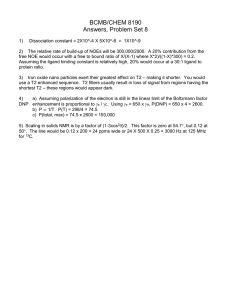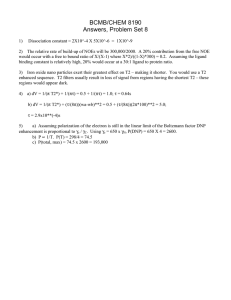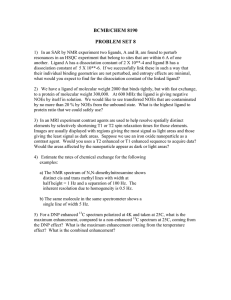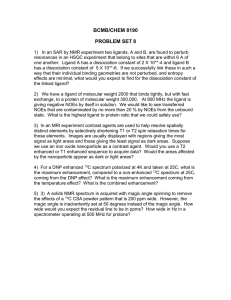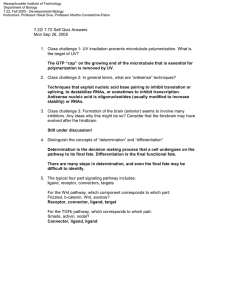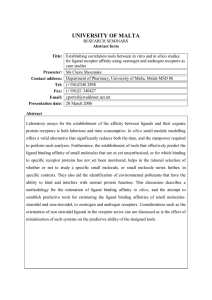Document 13564244
advertisement
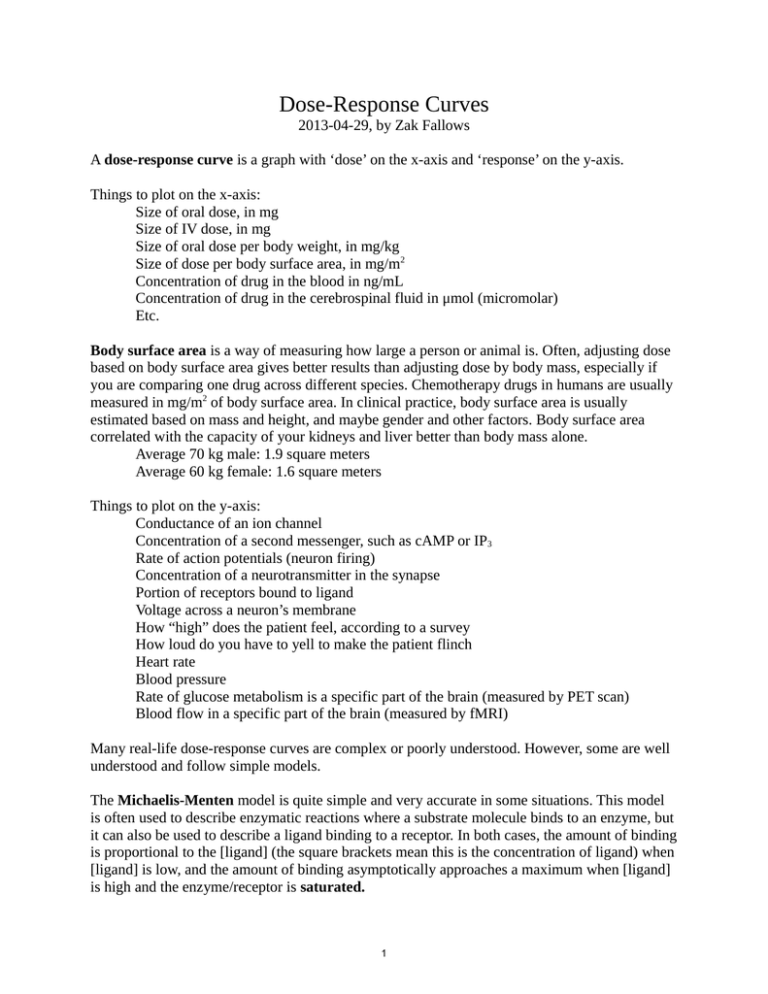
Dose-Response Curves � 2013-04-29, by Zak Fallows A dose-response curve is a graph with ‘dose’ on the x-axis and ‘response’ on the y-axis. Things to plot on the x-axis: Size of oral dose, in mg Size of IV dose, in mg Size of oral dose per body weight, in mg/kg Size of dose per body surface area, in mg/m2 Concentration of drug in the blood in ng/mL Concentration of drug in the cerebrospinal fluid in μmol (micromolar) Etc. Body surface area is a way of measuring how large a person or animal is. Often, adjusting dose based on body surface area gives better results than adjusting dose by body mass, especially if you are comparing one drug across different species. Chemotherapy drugs in humans are usually measured in mg/m2 of body surface area. In clinical practice, body surface area is usually estimated based on mass and height, and maybe gender and other factors. Body surface area correlated with the capacity of your kidneys and liver better than body mass alone. Average 70 kg male: 1.9 square meters Average 60 kg female: 1.6 square meters Things to plot on the y-axis: Conductance of an ion channel Concentration of a second messenger, such as cAMP or IP3 Rate of action potentials (neuron firing) Concentration of a neurotransmitter in the synapse Portion of receptors bound to ligand Voltage across a neuron’s membrane How “high” does the patient feel, according to a survey How loud do you have to yell to make the patient flinch Heart rate Blood pressure Rate of glucose metabolism is a specific part of the brain (measured by PET scan) Blood flow in a specific part of the brain (measured by fMRI) Many real-life dose-response curves are complex or poorly understood. However, some are well understood and follow simple models. The Michaelis-Menten model is quite simple and very accurate in some situations. This model is often used to describe enzymatic reactions where a substrate molecule binds to an enzyme, but it can also be used to describe a ligand binding to a receptor. In both cases, the amount of binding is proportional to the [ligand] (the square brackets mean this is the concentration of ligand) when [ligand] is low, and the amount of binding asymptotically approaches a maximum when [ligand] is high and the enzyme/receptor is saturated. 1 Michaelis-Menten model with enzymes: The ligand is the substrate, the precursor chemical The ligand binds to an enzyme Michaelis-Menten model with receptors: The ligand is a neurotransmitter or drug (an agonist, antagonist, partial inverse agonist, etc.) The ligand binds to a receptor …or… The ligand is a drug, a reuptake inhibitor (e.g. cocaine) The ligand binds to a neurotransmitter transporter (e.g. DAT) Simple Michaelis-Menten equation: To model a wider range of phenomena, we can include the Hill coefficient, also called gamma. The Hill coefficient modifies the shape of the curve. 2 MIT OpenCourseWare http://ocw.mit.edu ES.S10 Drugs and the Brain Spring 2013 For information about citing these materials or our Terms of Use, visit: http://ocw.mit.edu/terms.
